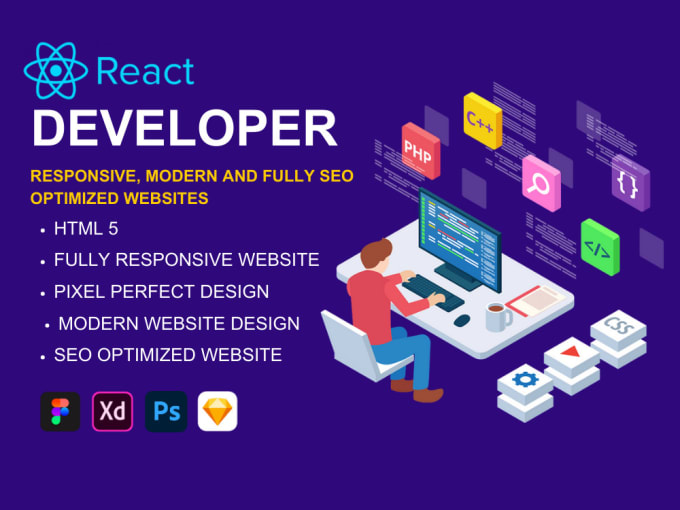Module 1: Introduction to Full-Stack Development
- Overview of Full-Stack Development:
- What is full-stack development?
- Understanding client-server architecture
- The role of Node.js, React, and MySQL in full-stack development
- Setting up Development Environment:
- Installing Node.js, npm, and React
- Installing MySQL and setting up a local database
- Introduction to code editors (VS Code, Sublime Text, etc.)
- Overview of Git and version control with GitHub
Module 2: Introduction to Node.js and Express
- What is Node.js?:
- Understanding asynchronous programming and the event-driven model
- Using npm for package management
- Setting Up a Node.js Project:
- Initializing a Node.js project with
npm init - Installing and configuring dependencies (Express, dotenv, MySQL)
- Initializing a Node.js project with
- Introduction to Express.js:
- Setting up an Express server
- Defining routes and middleware
- Handling HTTP requests (GET, POST, PUT, DELETE)
- Routing and Middleware:
- Using Express routing for dynamic endpoints
- Handling errors and exceptions with middleware
- Working with JSON data in Express
Module 3: Introduction to MySQL and Database Operations
- Introduction to MySQL:
- What is MySQL and why use it in web applications?
- Overview of SQL commands (SELECT, INSERT, UPDATE, DELETE)
- Basic database design concepts (tables, relations, foreign keys)
- Setting Up MySQL with Node.js:
- Installing the
mysql2orsequelizelibrary - Connecting Node.js to MySQL using MySQL2 and Sequelize
- Writing SQL queries from Node.js (CRUD operations)
- Installing the
- Database Structure and Relations:
- Designing a relational database schema (tables and relationships)
- One-to-Many and Many-to-Many relationships
- Using JOINs to fetch related data
- Database Migrations and Seeding:
- Creating database migrations for schema changes
- Seeding the database with initial data using scripts
Module 4: Building RESTful APIs with Node.js and Express
- REST API Basics:
- What is REST (Representational State Transfer)?
- Designing RESTful routes and endpoints (GET, POST, PUT, DELETE)
- Using JSON as the data format for API communication
- Building CRUD API Endpoints:
- Creating API endpoints for creating, reading, updating, and deleting resources
- Handling incoming request data (body, query parameters)
- Error handling and validation of API requests
- Authentication and Authorization:
- Implementing user authentication with JWT (JSON Web Tokens)
- Protecting API routes with middleware (using
passport.jsor custom authentication middleware) - Password hashing and securing sensitive data
Module 5: Introduction to React
- Setting Up React:
- Creating a React project using Create React App or Vite
- Understanding the folder structure of a React project
- Installing and configuring React dependencies (e.g., React Router)
- React Components:
- Creating functional and class components in React
- Understanding state and props in React components
- Using
useStateanduseEffecthooks for component state and side effects
- Handling Events in React:
- Handling user input and events (click, change, submit)
- Working with forms and controlled components
Module 6: React-Router for Navigation
- Introduction to React Router:
- Setting up React Router for navigation between pages
- Defining routes using
RouteandSwitchcomponents - Navigating between pages using
LinkandNavLink
- Dynamic Routing in React:
- Passing parameters in routes and extracting data using
useParams - Implementing nested routes and layouts
- Protecting routes with authentication logic (e.g., PrivateRoute)
- Passing parameters in routes and extracting data using
Module 7: Integrating React with Node.js Backend
- Connecting Frontend (React) with Backend (Node.js):
- Fetching data from the Node.js API in React using
fetchoraxios - Using asynchronous functions to handle API calls
- Displaying fetched data in React components
- Fetching data from the Node.js API in React using
- Handling Forms in React:
- Creating forms in React and handling form submission
- Sending form data to the Node.js API (POST requests)
- Handling form validation and errors
- Managing Global State in React:
- Using React Context API to manage global state
- Prop drilling vs. global state management
- Introduction to state management libraries (e.g., Redux)
Module 8: Advanced Topics in Full-Stack Development
- State Management with Redux:
- Introduction to Redux for managing global state
- Actions, reducers, and store in Redux
- Connecting React with Redux using
react-redux
- File Uploads and Handling Media:
- Handling file uploads from React to Node.js
- Storing files in the server or cloud (Amazon S3, Google Cloud Storage)
- Retrieving and displaying images or files in React components
- Real-time Communication with Socket.IO:
- Introduction to WebSockets and real-time communication
- Using Socket.IO for real-time chat applications
- Integrating Socket.IO into Node.js and React
Module 9: Security Best Practices
- Securing the Backend (Node.js):
- Validating and sanitizing user input to prevent SQL injection
- Implementing CORS (Cross-Origin Resource Sharing) in Express
- Using HTTPS for secure communication
- Securing React Frontend:
- Preventing Cross-Site Scripting (XSS) in React
- Securing tokens (JWT) and cookies in React
- Handling authentication errors and unauthorized access
- General Security Practices:
- Protecting sensitive data (password hashing with bcrypt)
- Role-based access control (RBAC)
- Preventing CSRF attacks and using CSRF tokens
Module 10: Deployment and Performance Optimization
- Preparing for Deployment:
- Optimizing React for production using
npm run build - Minifying JavaScript and CSS files in Node.js and React
- Environment variables and production configuration
- Optimizing React for production using
- Deploying the Full-Stack Application:
- Deploying the React frontend on platforms like Netlify, Vercel, or GitHub Pages
- Deploying the Node.js backend on platforms like Heroku, DigitalOcean, or AWS
- Connecting MySQL database to the live backend
- Performance Optimization:
- Lazy loading components in React
- Caching strategies for API responses in Node.js
- Optimizing database queries and indexes in MySQL



